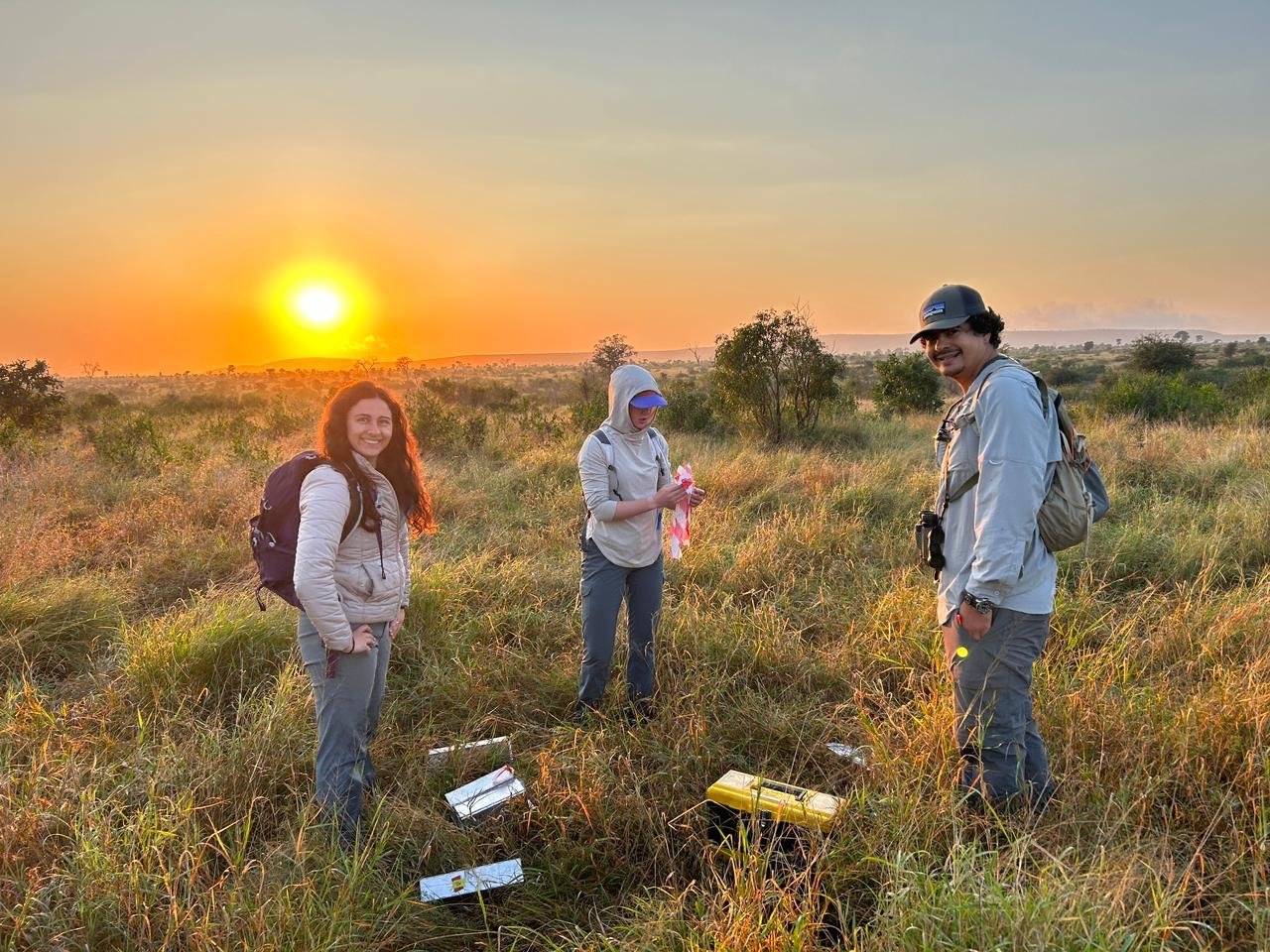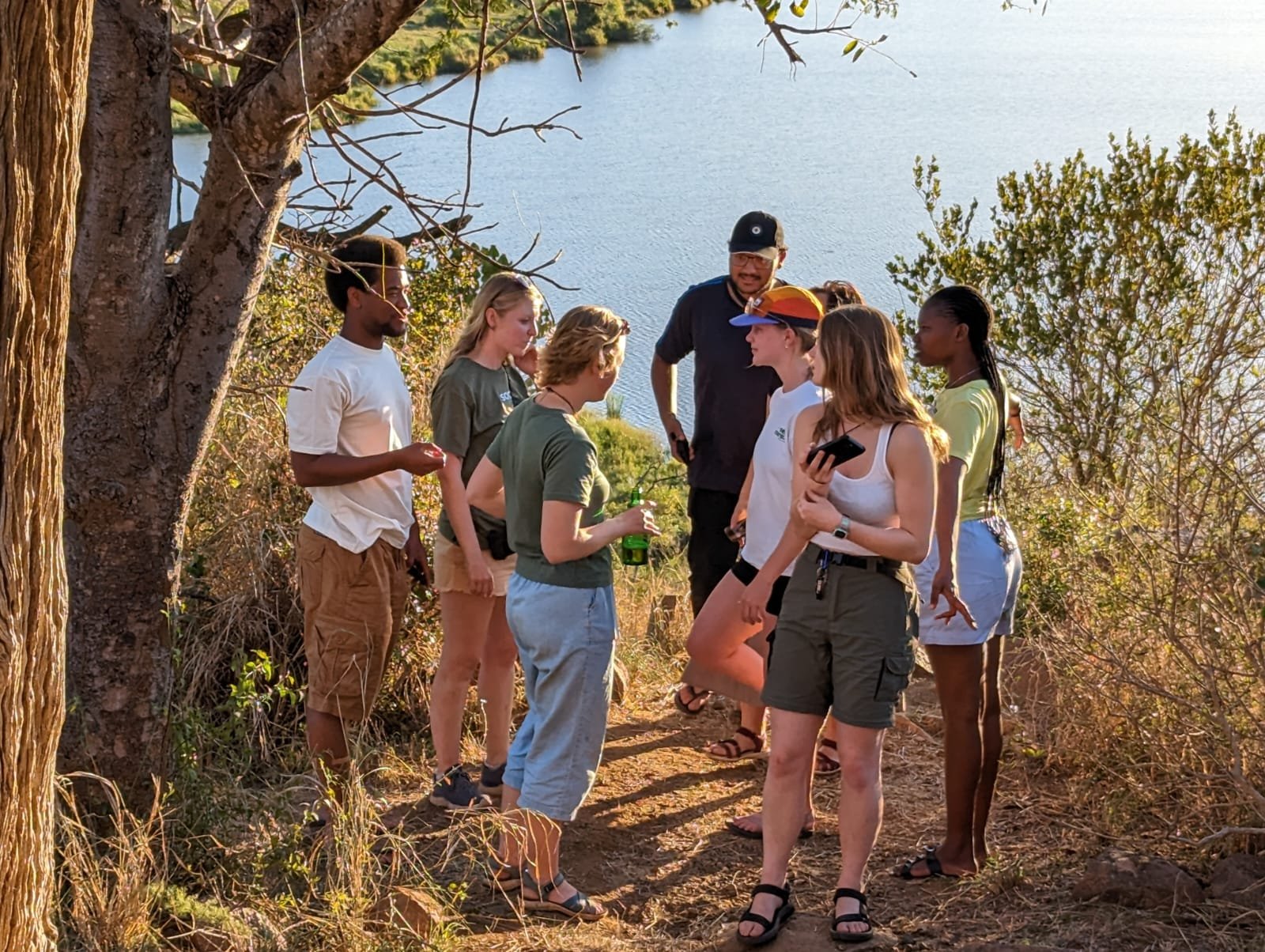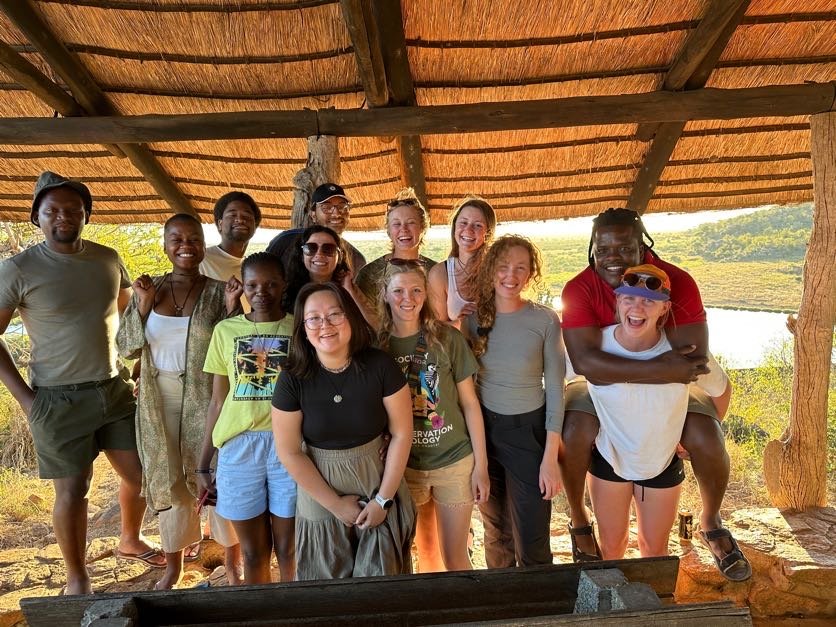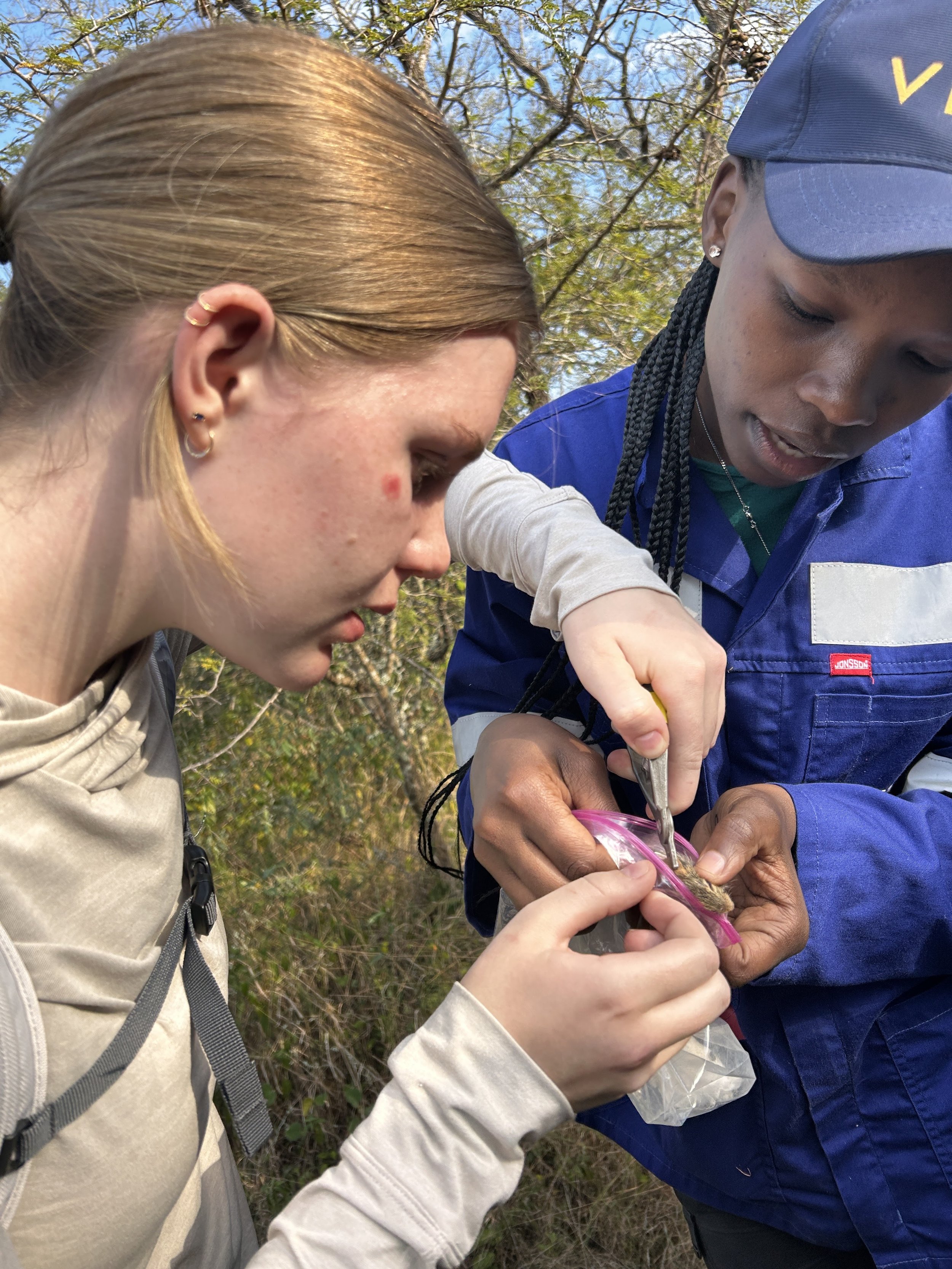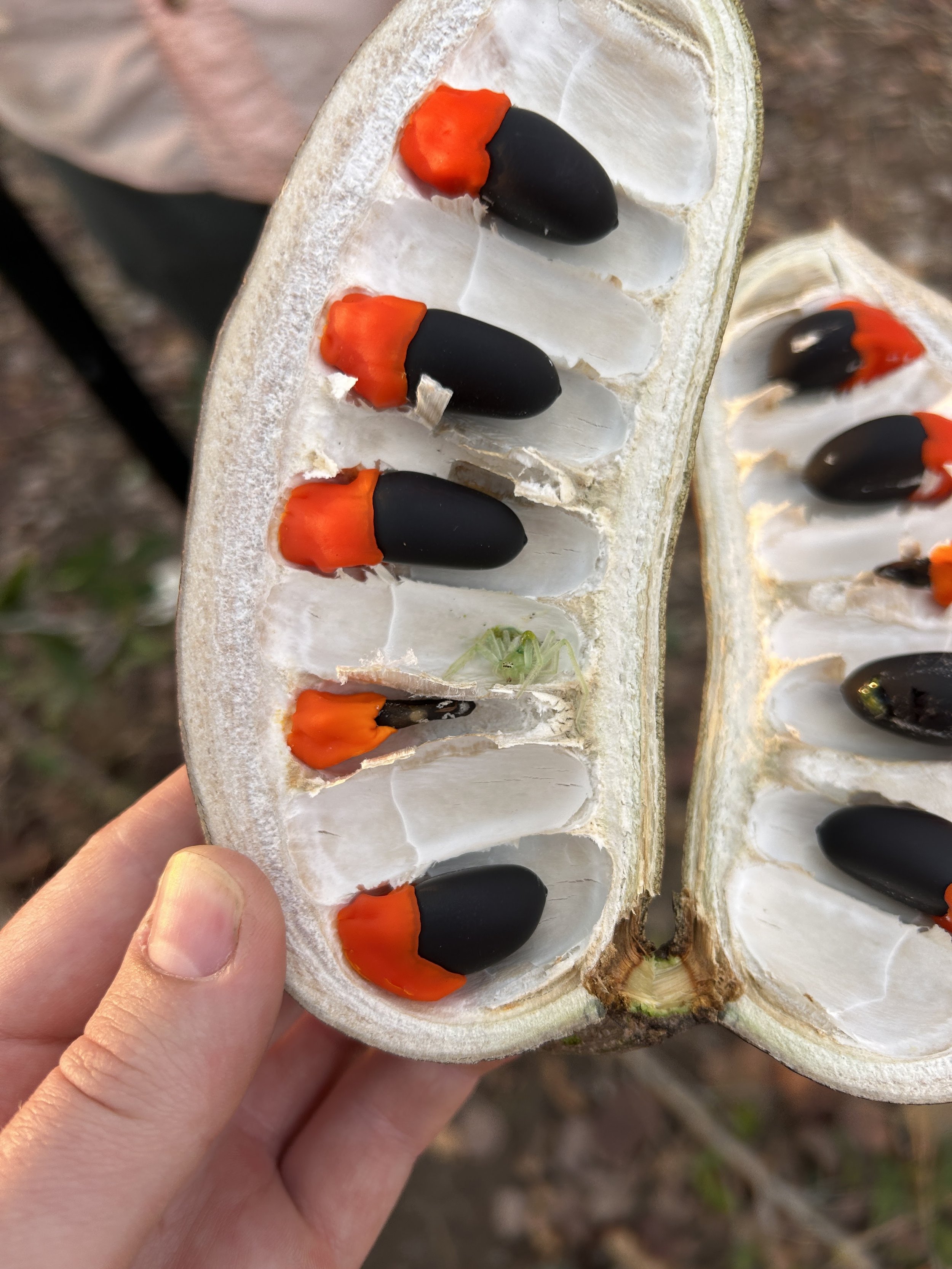TRIP TO SOUTH AFRICA
By Claire Asmussen
17 July 2023
I am happy to report that everything went well in South Africa and Eswatini. I had a lot of fun forming relationships with Swazi and South African students as well as other students from the U.S. Though it was hard work and long days, the knowledge, perspective, and friendships I gained are invaluable.
On a normal field day, all the other students and I would wake up around 5:30 am. We would eat breakfast prepared by the camp chefs and head out to do various activities. Many days we would take part in rodent processing, which is the trapping, measuring, and tagging of various species of native rodents in a mark recapture style survey. This allowed students to determine the diversity and abundance of various rodents. In some cases, we would also collect feces from the rodents and students would process it to determine the endoparasites in that rodent's GI tract.
Other days, our work would include bird and vegetation surveys. Birding entailed walking slowly around a research plot for a designated amount of time and recognizing both the phenotypes and calls of many different birds. Vegetation surveys consisted of many different measurements to assess the grass, bush, and canopy dominance in a research plot. These surveys have implications for the effects of the presence or a sense of Elephants on bush encroachment and big tree removal. I was also able to help teams working on camera trapping herbivores reactions to different animal calls. Their work was focused on figuring out if herbivores react differently to the calls for their direct competitors versus those in different niches of herbivory.
Over the course of this project and while learning all of these new skills, I got the chance to look at all the projects around me and come up with one of my own. This was a daunting task at first but I found myself really interested in seed dispersal and seed fate of some important savanna trees. My study used camera traps over trays of seeds to determine the main predators and dispersers of 4 seed types: Marula (Sclerocarya birrea), Knobthorn (Senegalia nigrescens), Umbrella Thorn Acacia (Vachellia tortilis), and Pod Mahogany (Afzelea quanzensis). These trees each have unique seeds with tortilis and nigrescens being small enough to be eaten by all savanna rodents and Marula being eaten even by elephants. The variation in these seeds allowed the study to analyze seed preference by certain species. Particularly interesting to me were the Pod Mahogany seeds. These seeds are large and tough, meaning rodents cannot easily eat them, but they are difficult to find anywhere on the ground surrounding fruiting trees. Little research has been done on seed fate of Pod Mahogany seeds and what research we could find was done in areas with squirrels, which our study site in Eswatini did not have. Through camera trapping we found many rodents chewing the Arils on these seeds and even taking them out of frame. Most shocking was camera footage that showed a bush pig eating entire plots of Pod Mahogany seeds.
Though my project was very interesting, many questions remain unanswered. Some results were difficult to analyze due to cameras being faulty or giraffes stepping on control plots (yes that happened more than once), so the work is definitely not done. We also don't know what other animals might be eating Pod Mahogany seeds or if the seeds survive through the digestive system of certain animals. It will also be interesting to discover where seeds taken out of frame ended up and whether they were effectively dispersed. I am working currently to arrange a possible trip back to South Africa to repeat this experiment during the South African summer. Some papers point to Pod Mahogany seeds being predated at this time of year when seed pods are still soft and green. Overall, my study produced more questions than answers, but I look forward to seeing other students continue the research and possibly getting the opportunity to return and further my own research.
In addition to the research and fieldwork skills I learned during my time with OTS South Africa, I also had the opportunity to expand my worldview. Prior to this trip I had never been outside of the U.S. and came from a place of relative privilege. Visiting South Africa and interacting with students there opened my eyes to the barriers that can make it challenging for students there to join the fields of conservation and ecology. Acquiring funding to attend University is difficult for many and even when they do acquire the necessary funding there is sometimes societal pressure for students to get a job and support their family rather than pursuing a degree. In Eswatini I met several students who were worried about not sending money home to their little siblings, or felt pressure from their parents to pursue a more traditional job. On a large scale, supporting students in South Africa and Eswatini should mean providing scholarships that include a family support stipend. However, on a personal scale it can mean something as small as offering words of encouragement that they are doing the right thing by taking the more difficult road and that their hard work will have a bigger payoff in the end. By simply offering encouragement, myself and other American students can help our peers in South Africa and Eswatini to overcome the societal norms that may otherwise stop them from pursuing their dream career and making a difference in the world of conservation.
Photos by Claire Asmussen
